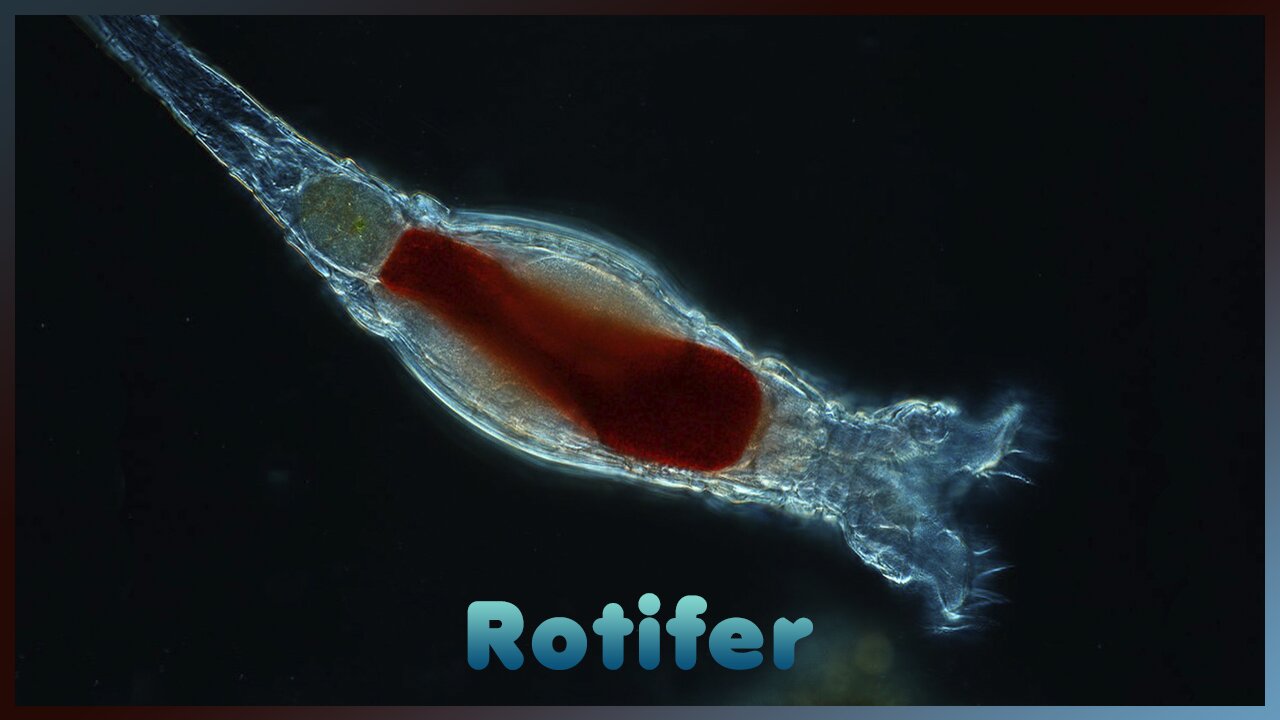Premium Only Content

Rotifers
They were first described by the Rev. John Harris in 1696, and other shapes were described by Antonie van Leeuwenhoek in 1703. Most rotifers are about 0.1–0.5 mm long (albeit their size can range from 50 µm to more than 2 mm), and are common in freshwater environments around the world with some saltwater species.
Some rotifers are free-swimming and are truly planktonic, others move slowly along a substrate, and some are sessile, living inside gelatinous tubes or fixatives that are attached to a substrate. About 25 species are colonial (eg Sinantherina semibullata ), sessile or planktonic. Rotifers are an important part of freshwater zooplankton, being an important food source and with many species also contributing to the decomposition of soil organic matter. Most rotifer species are cosmopolitan, but there are also some endemic species such as Cephalodella vittata to Lake Baikal. Recent barcode evidence, however, suggests that some 'cosmopolitan' species, such as Brachionus plicatilis, B. calyciflorus, Lecane bulla, among others, are actually species complexes.
-
 1:58:23
1:58:23
The Charlie Kirk Show
2 hours ago“Liberation Day” Reaction + Military Standards + Tariff History | Thibeau, Hanson | 4.3.25
74.1K12 -
 LIVE
LIVE
SternAmerican
23 hours agoIntegrity in Action call With Steve Stern and Raj Doraisamy Thursday, April 3rd at 2:00PM EST
475 watching -
 1:39:41
1:39:41
Rebel News
2 hours ago $1.89 earnedTrumps new global tariffs, Poilievre and Carney respond, Tamara Lich verdict | Rebel Roundup
26.4K4 -
 1:06:19
1:06:19
TheAlecLaceShow
2 hours agoTrump Tariffs Take Effect | Alec Lace in the Rose Garden | Guest: Jim Pfaff | The Alec Lace Show
17.9K1 -
 LIVE
LIVE
Major League Fishing
2 days agoLIVE! - MLF Bass Pro Tour: REDCREST - Day 1
4,699 watching -
 LIVE
LIVE
Viss
2 hours ago🔴LIVE - How to Continuously Stack Win in Solo PUBG!
350 watching -
 59:50
59:50
The Rubin Report
4 hours agoEconomist Destroys Jon Stewart’s Narrative w/ Facts in Only 3 Minutes
65K22 -
 1:40:46
1:40:46
Flyover Conservatives
13 hours agoThe Tariffs Are HERE — How Will This Affect You?!; 44,000 COVID Tests, 19,000 Patients - Dr. Michael Schwartz | FOC Show
30.6K3 -
 LIVE
LIVE
LFA TV
18 hours agoLFA TV - ALL DAY LIVE STREAM 4/3/25
1,440 watching -
 59:14
59:14
VINCE
6 hours agoAmerica's Liberation Has Begun | Episode 14 - 04/03/25
282K181